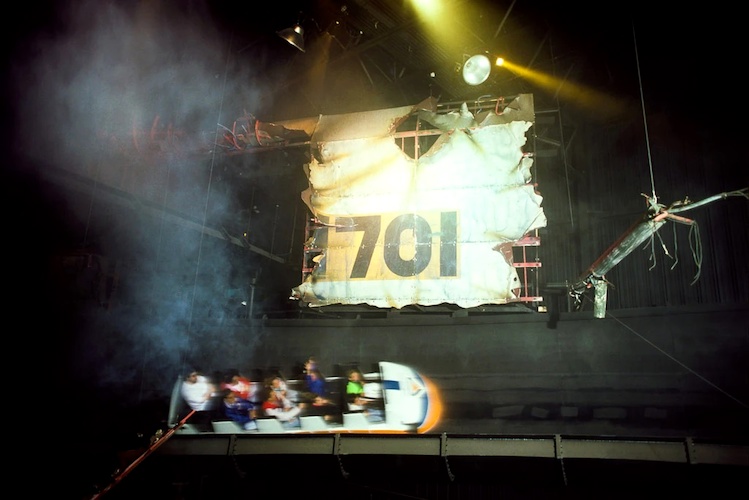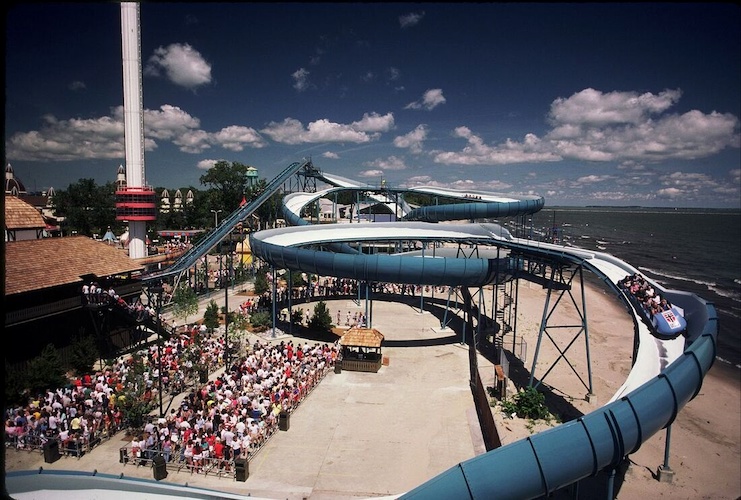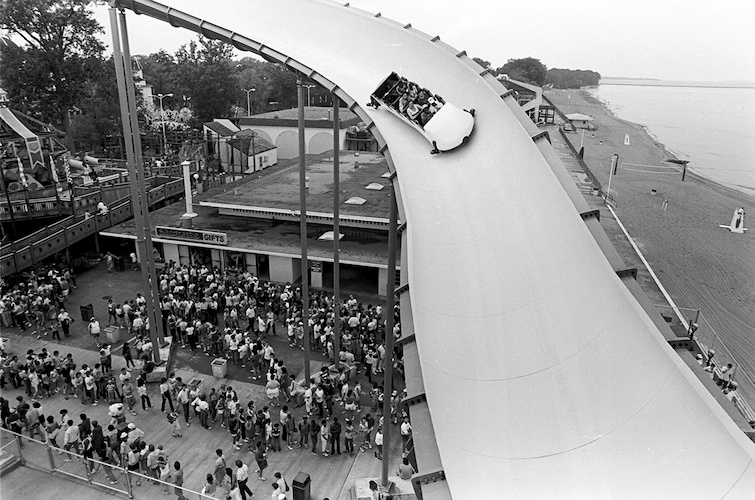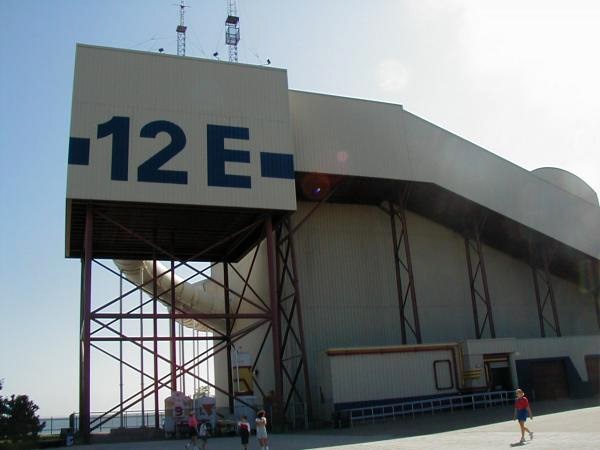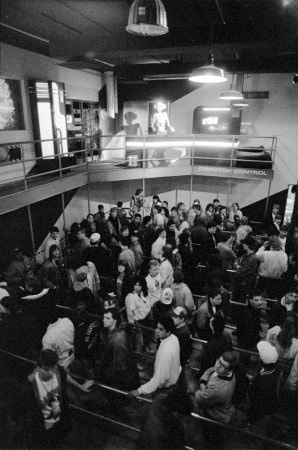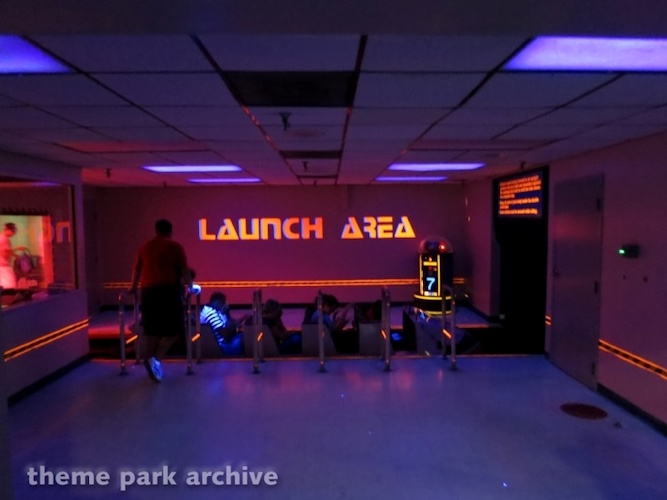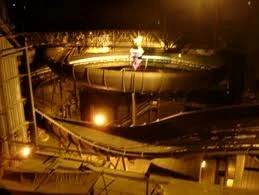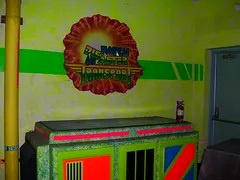Strange Attractions — A Look Back at Cedar Point’s Disaster Transport
Indoor roller coasters have become incredibly popular throughout the years. After the introduction of Walt Disney World’s Space Mountain in 1975, parks around the world have tried their hand at creating similar experiences. Over at Cedar Point, a coaster named Disaster Transport took a stab at the sci-fi space travel theme, but did you know that choice was actually out of necessity? Let’s take a look back at Disaster Transport.
America’s Roller Coast, AKA Cedar Point in Sandusky, OH, is home of some of the world’s most iconic roller coasters, including Millenium Force, Top Thrill 2, Steel Vengeance, Maverick, Magnum XL-200, and so many more. The over 150 year old amusement park has become known world-wide as a Mecca for thrill seekers. But one of their most unique thrills began its journey back in the 1980s.
Intamin, a world renowned roller coaster manufacturer, introduced a new coaster model in the early 80s inspired by the bobsledding. Aptly titled the Swiss Bob, the model took inspiration from the wooden bobsled coasters of the 1920s through 40s but used steel troughs instead of wood. Instead of being attached to rails, the coaster cars would freely run through the trough, performing sharp turns to increase the sensation of Ten years after the last wooden bobsled coaster, usually referred to as Flying Turns coasters, closed, the first Intamin steel Bobsled coasters began thrilling guests in 1984 with the opening of Sarajevo Bobsled at Six Flags Magic Mountain and Six Flags Great Adventure and Screamin’ Delta Demon and Opryland USA. Later that year on October 19th, Cedar Point announced the addition of Avalanche Run, a custom version of the Swiss Bob coaster, which was set to open in 1985. According to news reports, Avalanche Run missed its opening day of May 11th, 1985 after delays in the arrival of parts for the attraction, however, the coaster would open later that summer.
The outdoor attraction cost the park $3.4 million to manufacture and construct, and featured a white and blue paint scheme as well as an alpine themed station. While the attraction was popular with guests, its location right next to the beach proved problematic for operations. Large gusts of wind would constantly blow sand into the troughs, meaning the attraction would have to be shut down to allow employees to clean out the troughs for the coaster to operate as intended.
On October 22nd, 1989, Cedar Point announced that Avalanche Run would become Disaster Transport. The $4 million transformation completely enclosed the attraction and its queue in giant warehouse buildings with a brand new sci-fi theme. The story invited guests into Dispatch Master Transport, an intergalactic shipping service, and recruited them to step aboard one of their flying cargo ships for delivery to Alaska. Of course, in themed attraction fashion, the smooth mission turns into a race for survival.
Opening for the 1990 season, Disaster Transport was initially impressive for a park not known for its theming. The attraction boasted several themed queue areas, a pre-show, and animatronic figures. Inside the attraction, guests would find large prop asteroids, crashed ship pieces and laser effects that helped transport guests into the, admittedly convoluted, story.
However, these warehouse-type buildings proved problematic for sound design, with many of the queues' storyline beats being overpowered by sound effects and general queue noise. This led to confusion, as employees would welcome riders to Alaska, congratulating them on a successful delivery. Many guests were lost as to why they were being welcomed to Alaska, leading to the storyline becoming somewhat of a joke in the coaster community. For the most part, the ride was initially a success for the park, providing a unique family thrill attraction to the otherwise standard amusement park.
However, just a few years after the Disaster Transport’s opening, many of the attractions' effects and pre show disappeared. Whether Cedar Point wasn’t prepared to upkeep the attraction or they felt money was better spent elsewhere is up in the air, but the attraction quickly fell from grace. Ironically, enclosing the attraction provided the park with another operations problem. Usually, indoor roller coasters provide a respite for guests during rainstorms and inclement weather. However, the warehouse building’s roofs proved to leak, meaning the troughs would fill with water. While the park no longer had to worry about sand, this new problem meant the attraction couldn’t operate during certain weather conditions.
By the turn of the new millennium, all but the final queue room had been retrofitted for use during the park’s Halloweekends event. The warehouse buildings became home to each year’s selection of haunted houses, cutting even more of the attraction’s storyline. Inside the coaster, most of the effects had been permanently shut off or left in disrepair. For a short period of time, the park tried to combat this by selling 3D glasses that promised to make the attractions blacklight paint pop off the walls. This trick didn’t last long, as guests didn’t see the purpose of purchasing the “upgrade."
While the attraction building was always an eyesore, Disaster Transport’s lack of popularity and deteriorating experience proved to be a prime target for removal. After former Disneyland President Matt Ouimet took over as Cedar Fair’s CEO from Dick Kinzel, many major changes would begin throughout the chain’s parks. Just about a year after he took over, the park announced that Disaster Transport would be retired on July 29th, 2012 in favor of the addition of a new B&M Wing Coaster called Gatekeeper. The decision made perfect sense for a park that didn’t offer themed experiences in the realm of Disaster Transport. While a valiant effort to save a problematic attraction, Cedar Point’s first step into elaborate theming was an unfortunate miss.
As someone who had the opportunity to ride Disaster Transport, I loved it. Yes, the building was hideous. Yes, the theming was gaudy, loud, and resembled a laser tag arena. Yes, it was an unpopular offering at the park. But it was a weird ride with a ton of character. The pitch black ride experience was enhanced greatly by the free moving bobsled experience, and, for better or worse, there will never be another ride like Disaster Transport. While Gatekeeper is, aesthetically and experientially, far more inline with Cedar Point, I’ll always have a soft spot for Disaster Transport.
Read More Parks:



